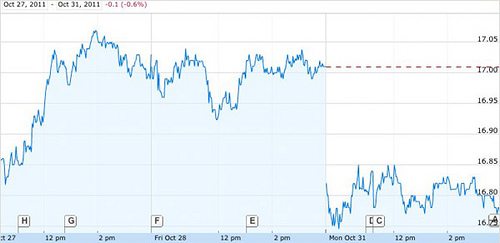Your Bounce Rate is 46 percent, your average page views have declined after a recent site redesign, and the average time on your site has fallen. What do these numbers really mean? How do they and other metrics drive increased revenue, decreased costs, customer retention, or other online objectives?
It depends.
Are users coming from a search engine to view one news article and leaving with their content goals met? Or do users arrive at the site, find it’s not the site they were looking for, and bolt? Either scenario would explain a high Bounce Rate.
How about an increase in overall visitors? That’s got to be a good thing, right?
Well, probably. But do visitor counts increase in general across your industry—maybe seasonally for holiday sales? And are your increases underperforming the industry average? If so, your gain may also be your lost opportunity.
Most site analytics are value-free, and generate more questions than answers—and smart questions are definitely needed. But further analyses or testing is required to answer those questions, and to understand how best to impact online behavior and grow your bottom line.

What do these figures mean?
There are a multiplicity of tools and measurement strategies you can engage—and you should be using more than one. One of the easiest to implement and most powerful is the on-exit, in-line site survey. You don’t need to be an expert to build one—just review your site metrics, generate hypotheses, and then craft a short set of questions that will test your hypotheses. You can be up and running in hours and have more meaningful quantitative and qualitative feedback than you ever imagined.
What do visitors come to the site for? Ask. Did they get what they came for? Ask. Would they like other content, features, or functions? Ask. Will they come back? Just ask.
Some of the things you’ll want to consider when building an online survey are:
- the number of questions—they should be limited to encourage participation and completion
- industry and competitive benchmarks that you can measure against (e.g., ACSI, Compete)
- Google Analytics—integration with survey tool for targeting and segmentation
- quantitative feedback—(e.g., rating from 1–10) that will make the case to management
- qualitative feedback—open-field, voice of customer that will seal the deal with management
Each survey you complete will generate new insights, new improvements, and new surveys that can and should grow into an important program of continuous learning and optimization. Again, you can be up and running in no time. Feel free to give us a call if you need an assist.
(In his book, Web Analytics 2.0, Avinash Kaushik updates and expands on his earlier work, Web Analytics: An Hour A Day. I highly recommend it for all of our clients. Pick up a copy at Amazon or, if you’re in the office, ask me for one of our extra copies. We keep a few on hand for our clients. Also, consider Q4 by iPerceptions, a free (or paid) on-exit survey tool developed in collaboration with Mr. Kaushik).






